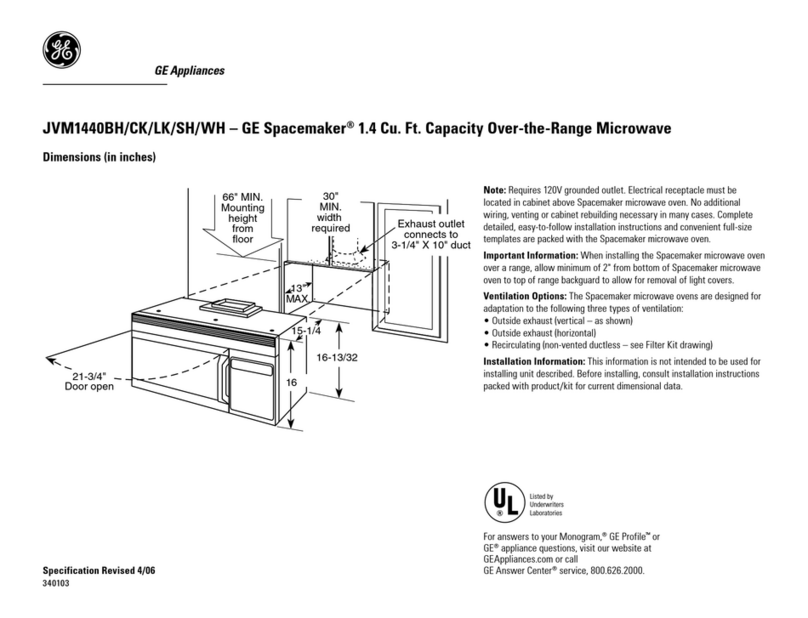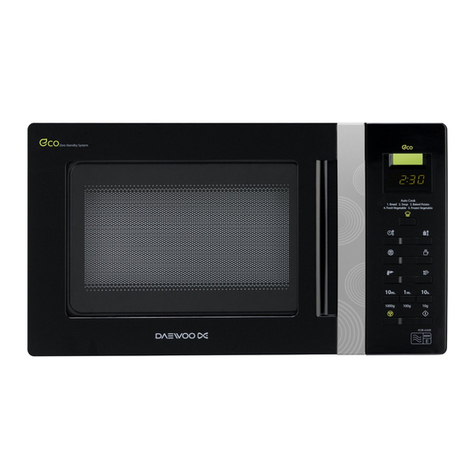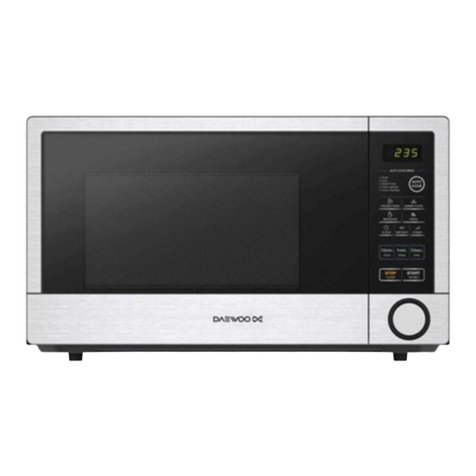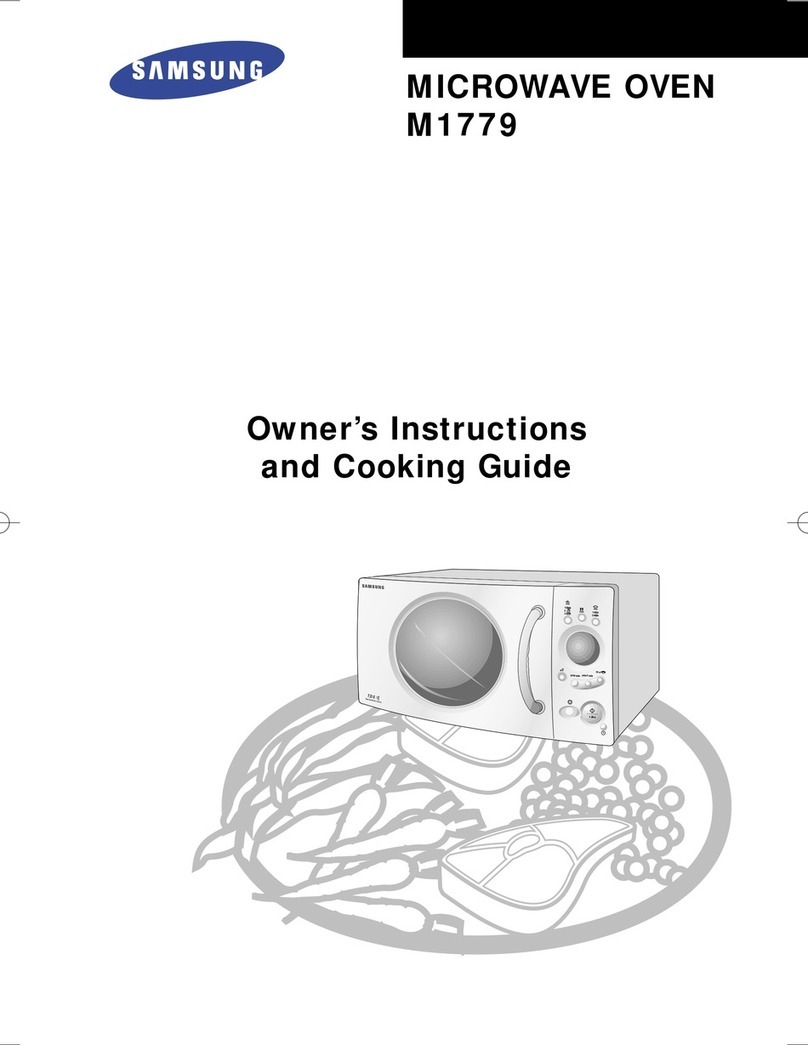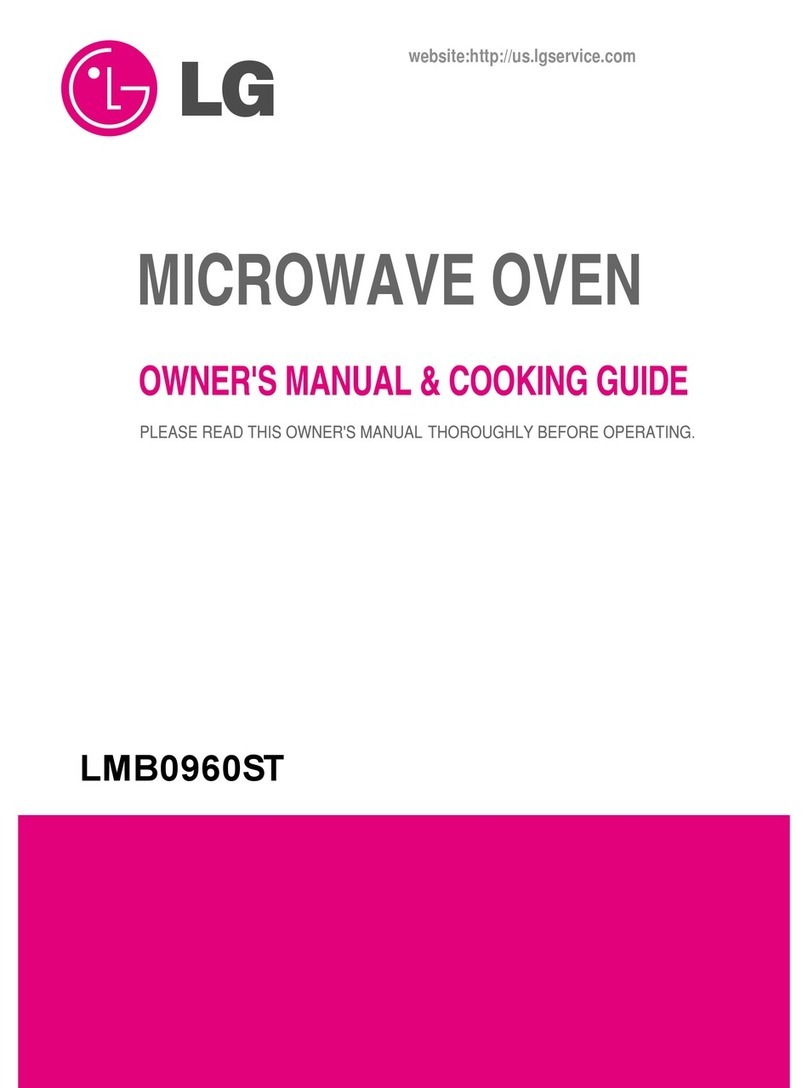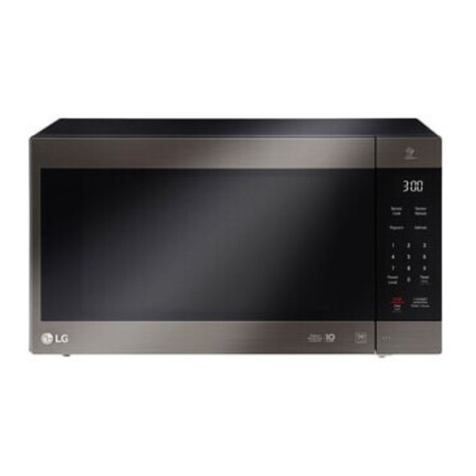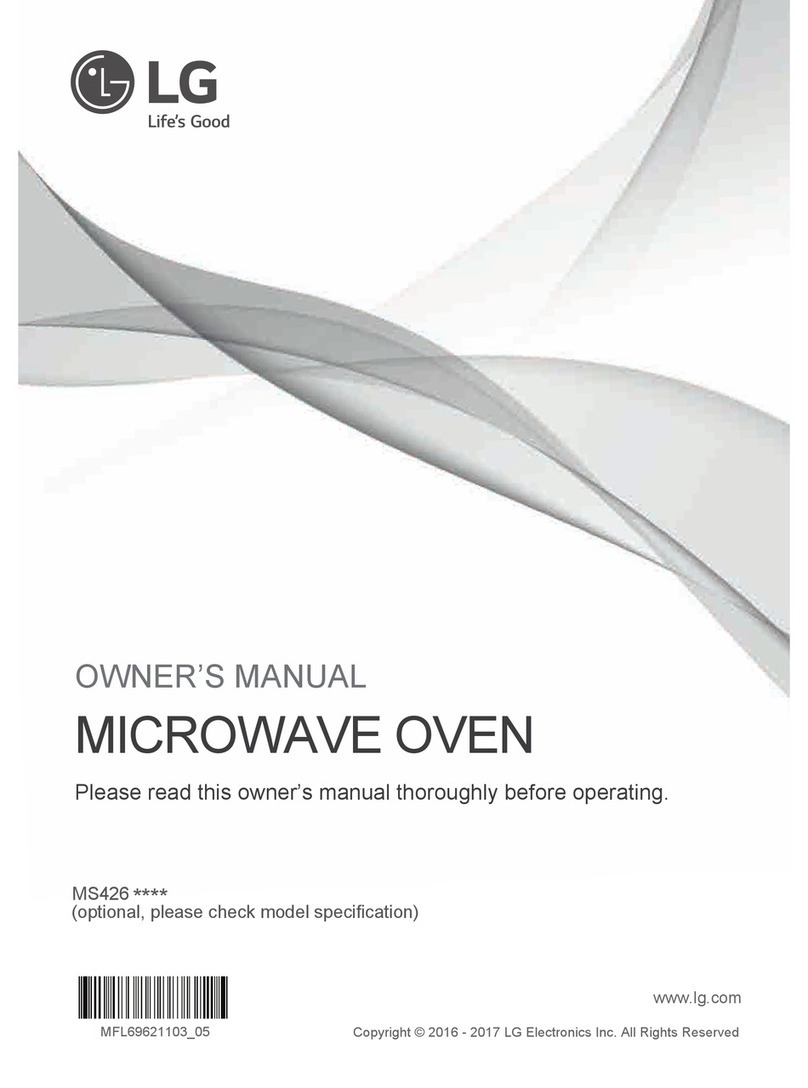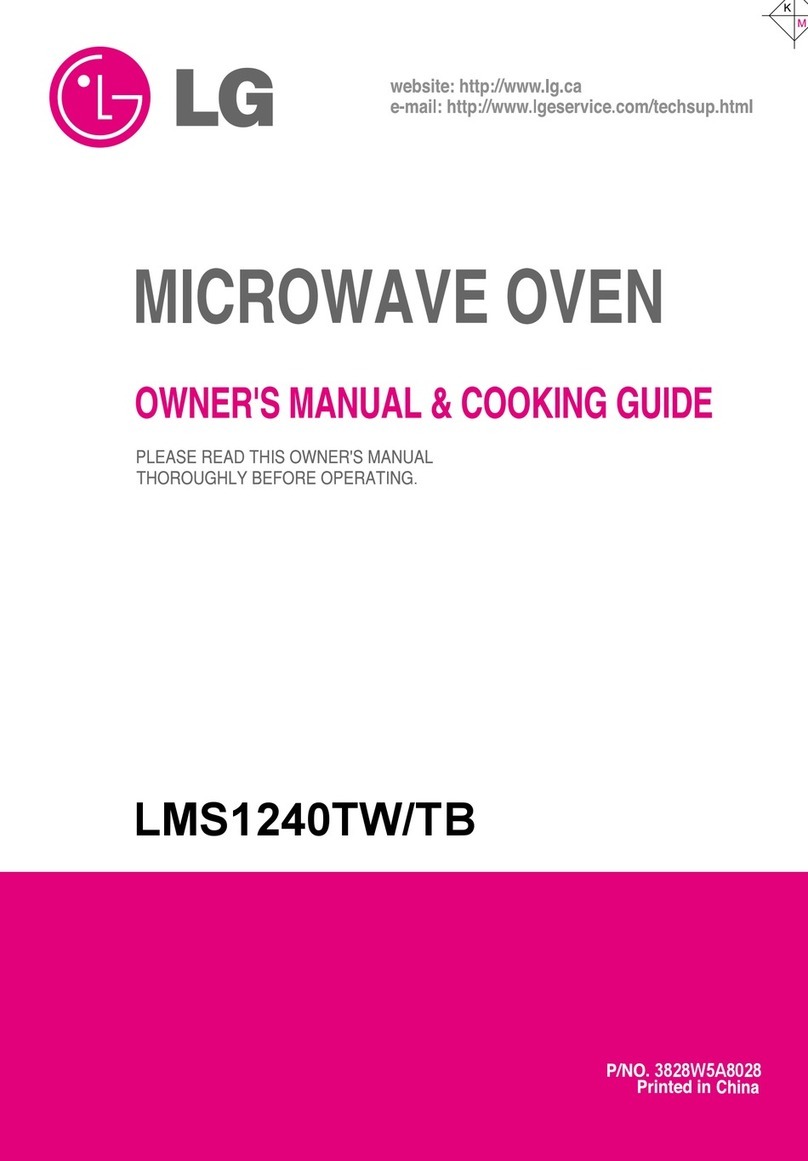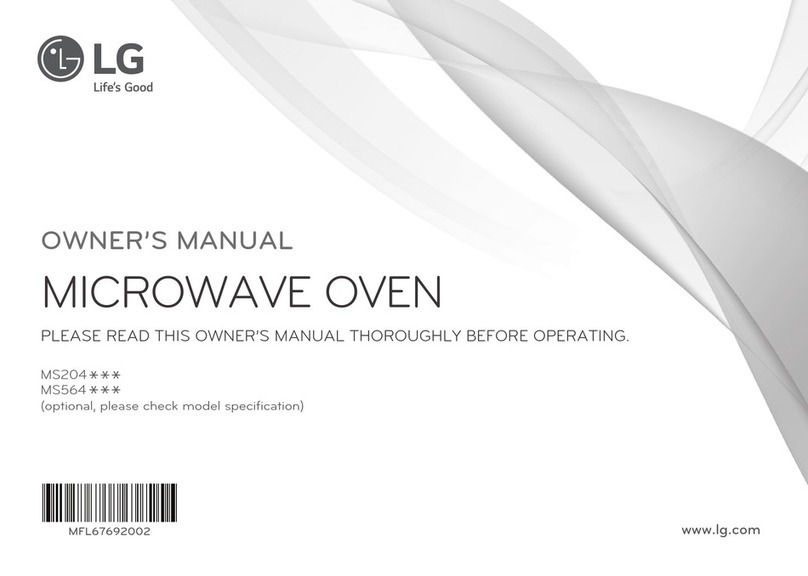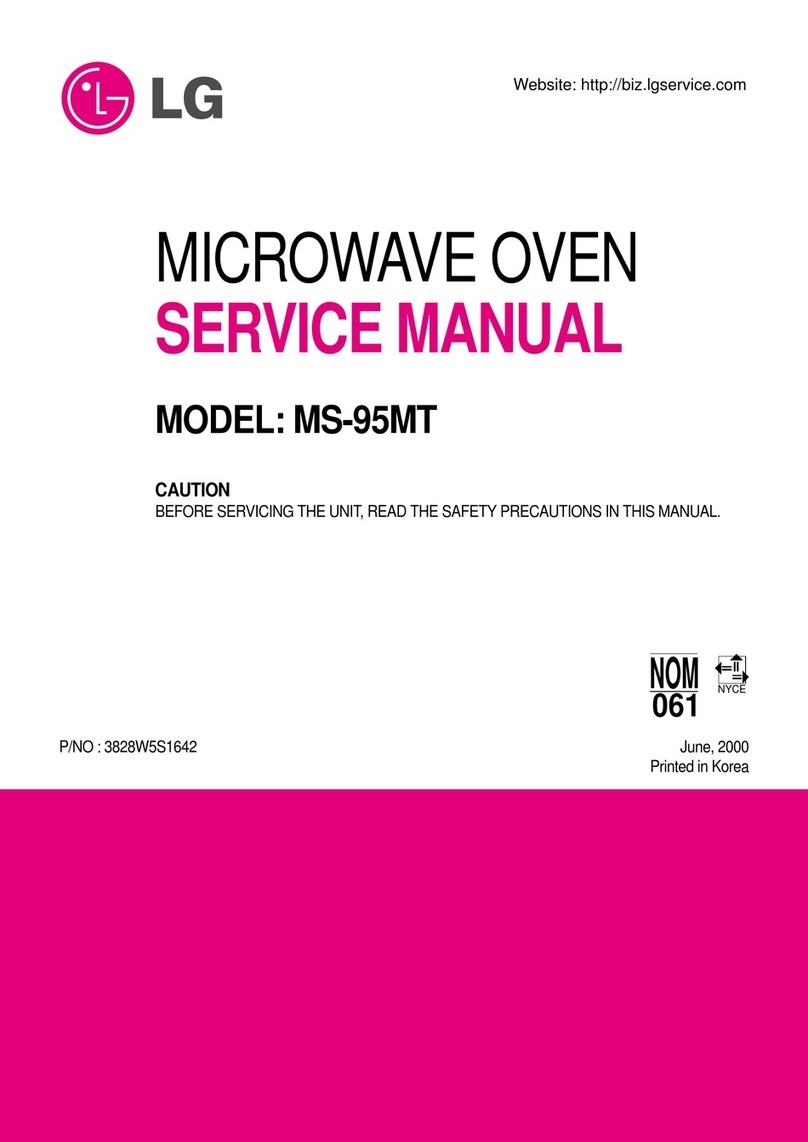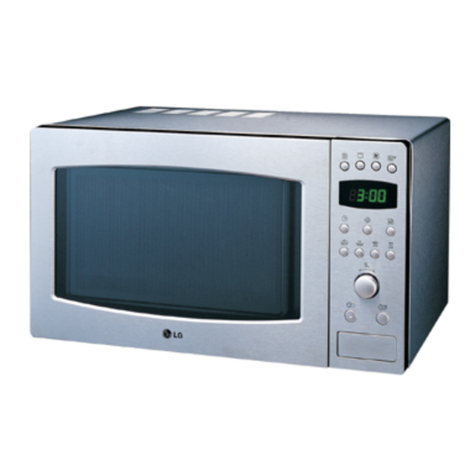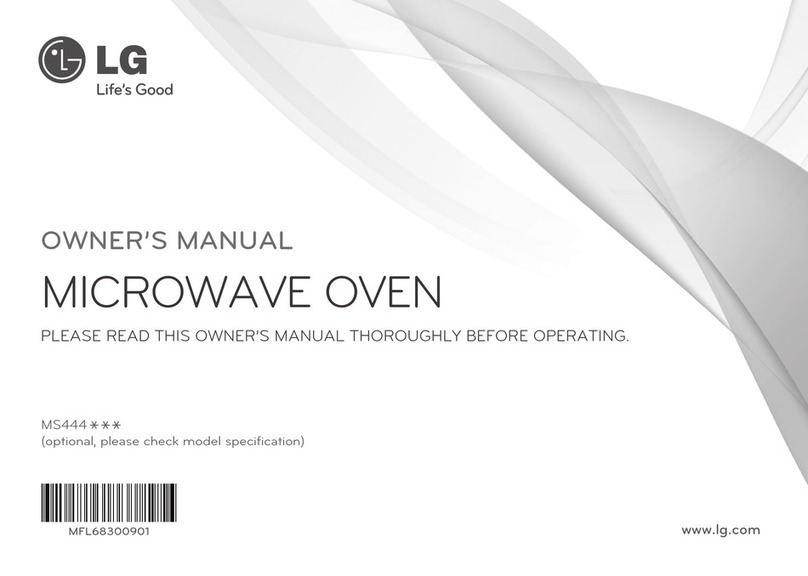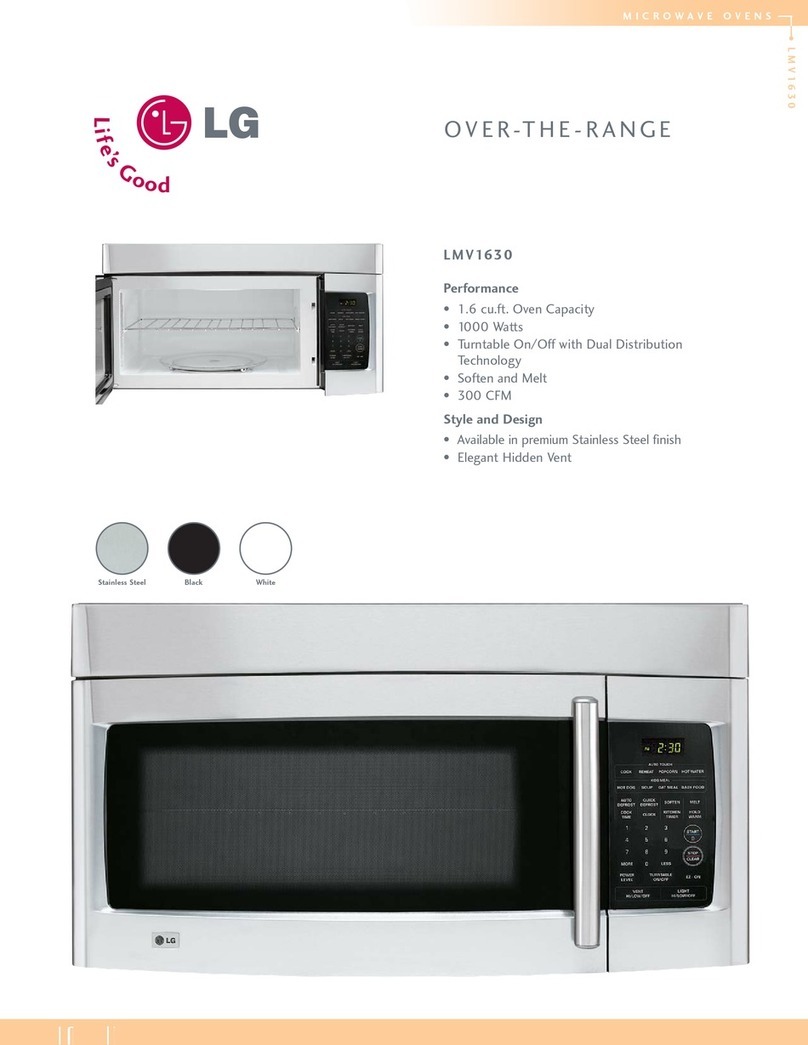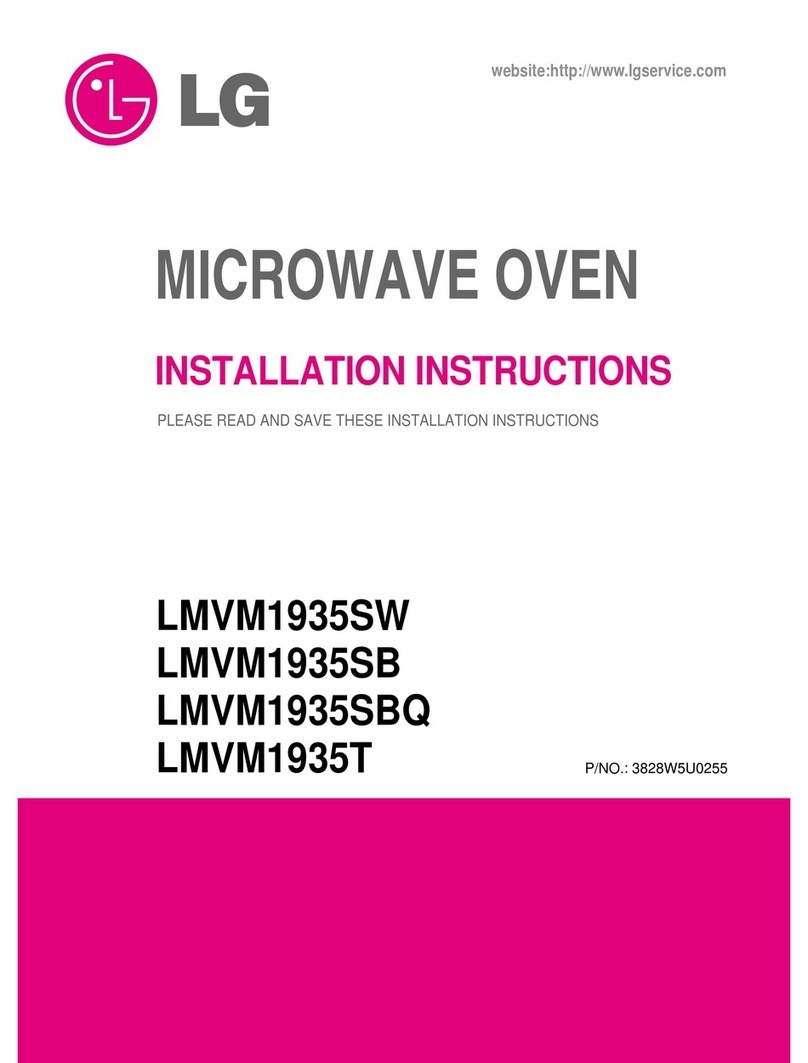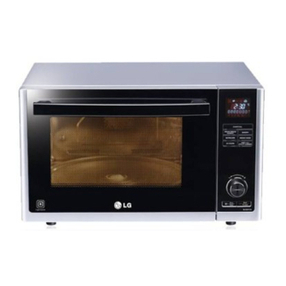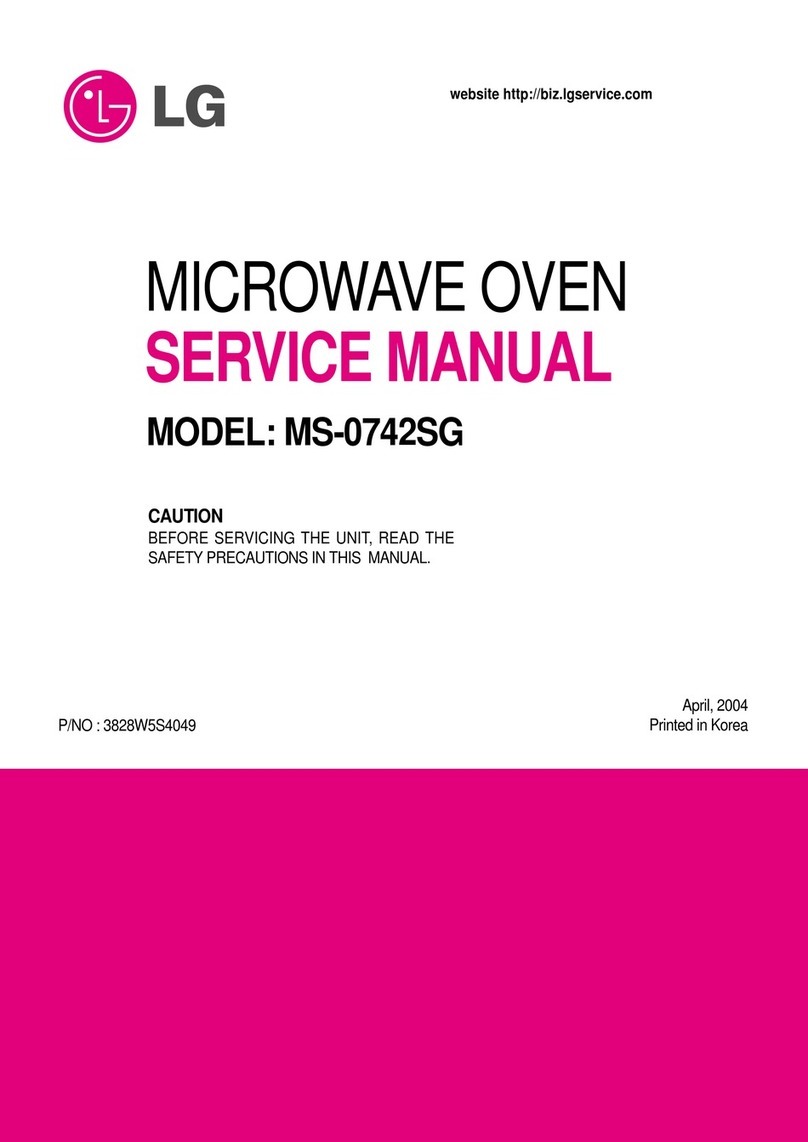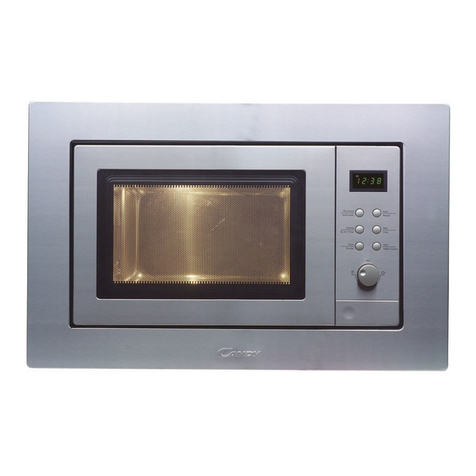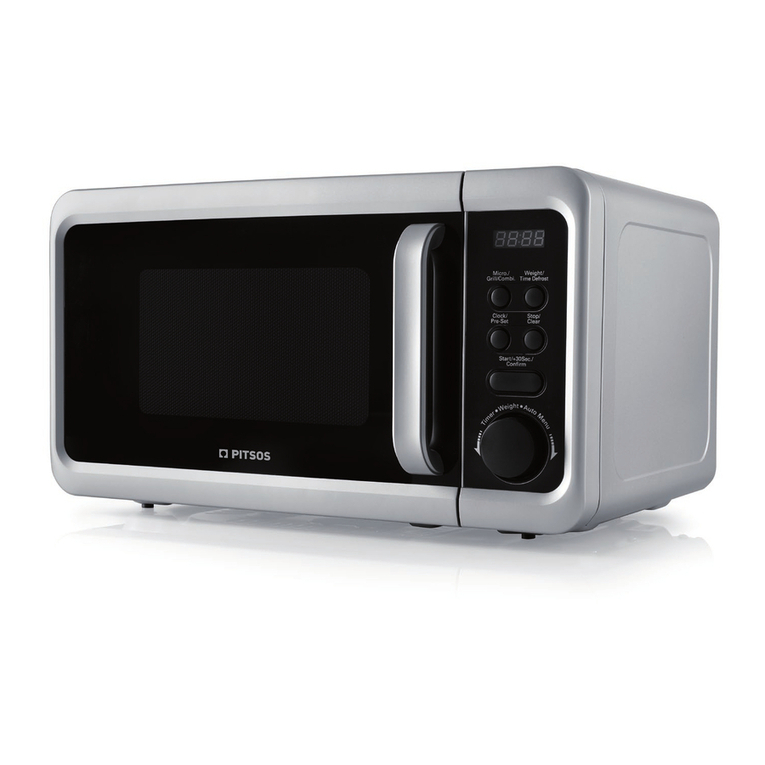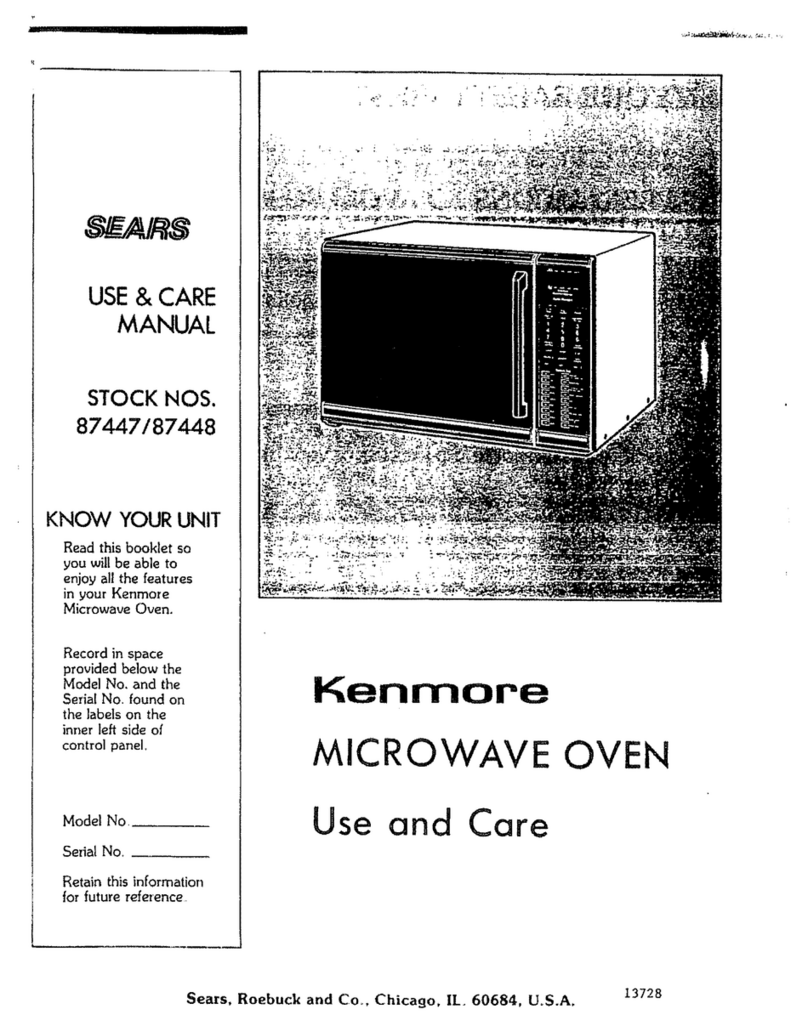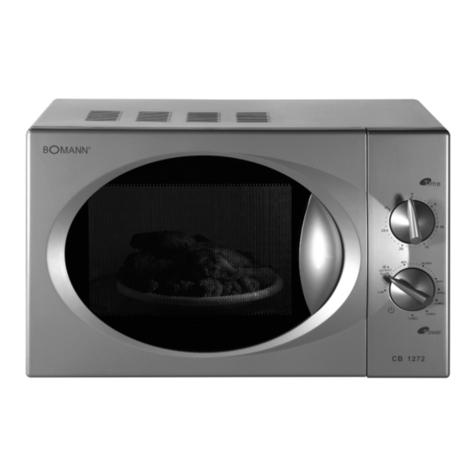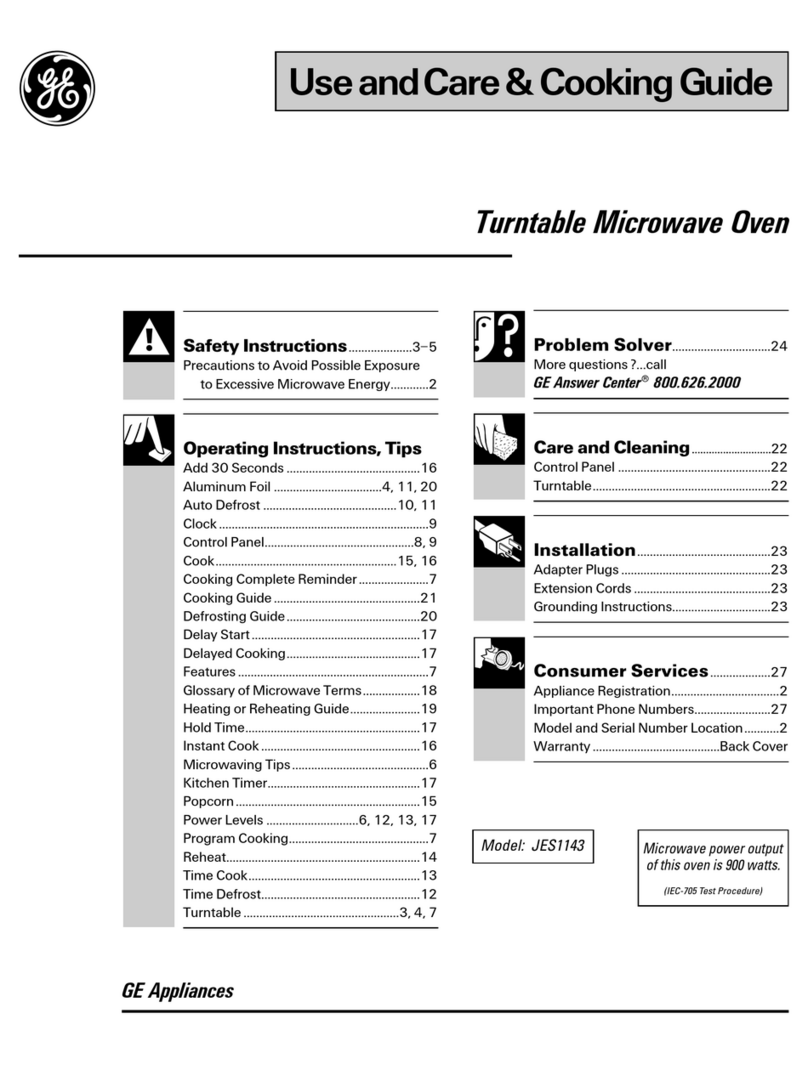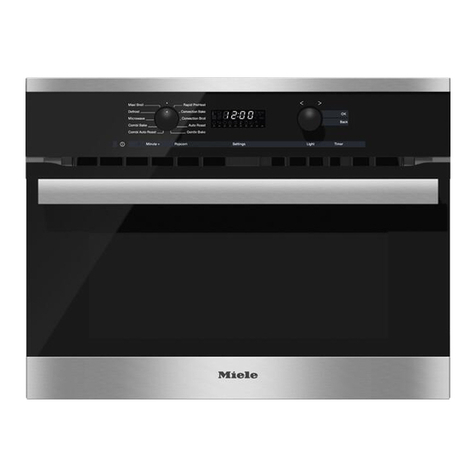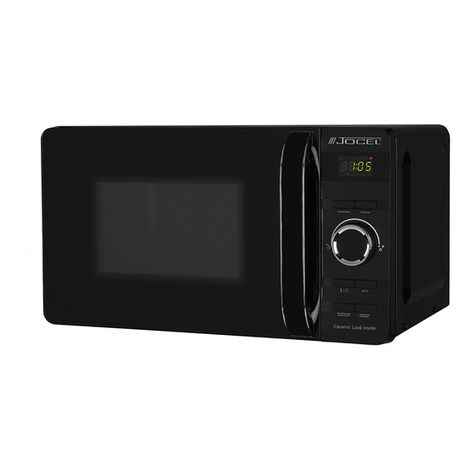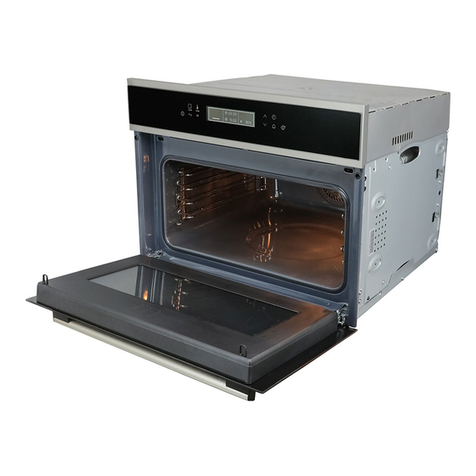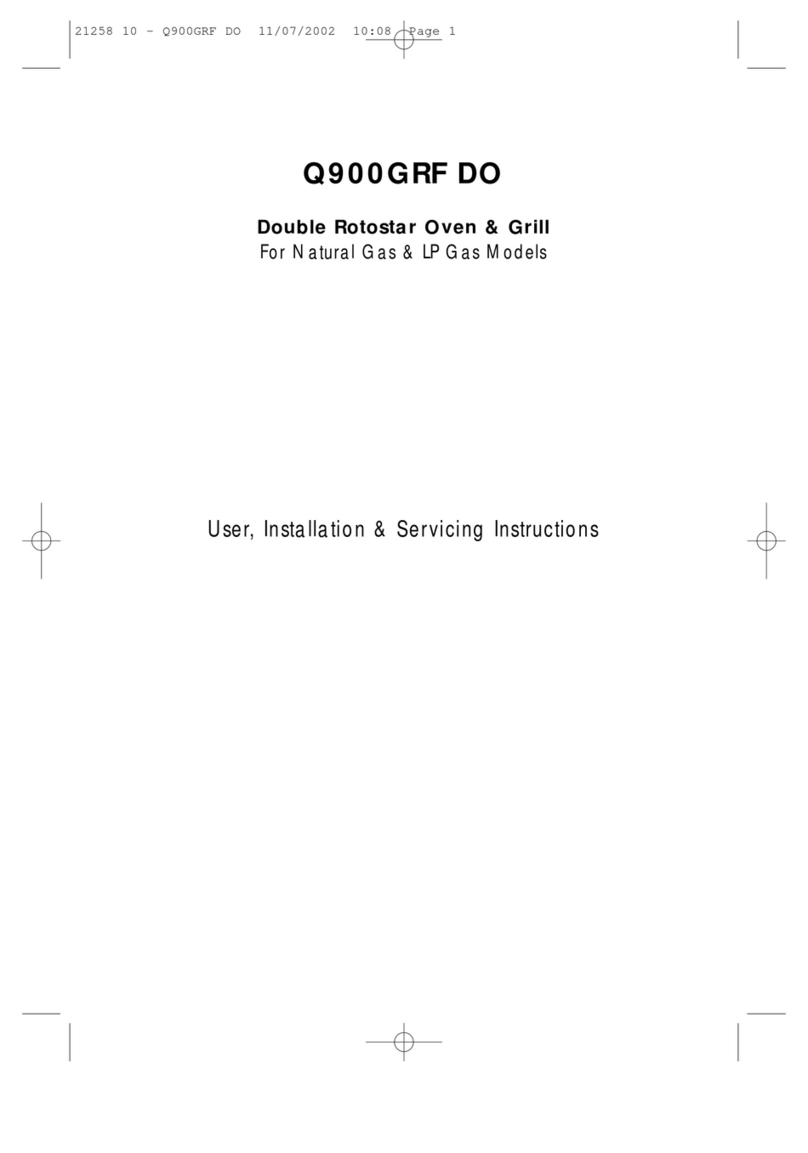
9
Thequantity or volume of a foodcan affect theamount of
cooking time. As the volume of the food is increased, the
time required to cook or heat the item increases almost
proportionately. If twice the amount of food is placed in the
oven, it will take almost twice as long to cook. To deter-
minethe time for larger quantities,multiply the individual
servingtime bythe increased amount, then reducethe
total heating time by about 20%.
Thedensity of foods cangreatly affect theamount of
cooking time. Porous foods, such as breads, cakes or
pastries, will heat much more quickly than dense meats
ofthe same size.Porous foods absorb microwaves
quicklythroughout. Meatsabsorb microwaves mostly at
the exterior surface, and the interior is heated by conduc-
tion, increasing the cooking time. Meats can be cooked in
a sauce, if desired. Due to the moisture content, a sauce
will heat rapidly. The heat will transfer to the meat, so the
meat will heat faster due to heat by conduction as well as
bymicrowaves.
Thestarting temperature of foods affects the amount of
cookingtime. Eachtemperature degree that the fooditem
is to raise must be supplied with a definite amount of
energy.Lowerinitial starting temperaturesrequiremore
energyandmore time to cook.Therefore,refrigerator
temperaturefoods require alongercooking time thando
roomtemperature foods. Foodsalready slightly warm will
heatvery quickly in the oven.
Themoisture content of foodsaffectsthe amountof
cooking time. The higher the moisture content is in a food
the longer the amount of cooking time.
The fat and sugar content of foods affects the amount of
cookingtime. Foods containing high fatand sugar levels
heatvery quickly and may reachmuch higher tempera-
turesthan foods havinglowfat and sugarlevels. Foods
havinglowerfatandsugar levels require longercooking
times.
Thearrangement of foodwithin a microwave oven cavity
affects the way in which the food cooks. A “round”
arrangementis best. Use round utensilswhenever
possible. Also, arrange foods such as baked potatoes in
a circle, rather than in rows, for cooking. When only one
food item is being cooked, place it in the center of the
ovenglass shelffor cooking.
Manipulation of Foods
Sometimesrecipessuggest manipulating ormoving food
duringcooking.Thereare several forms ofmanipulation:
Stirring isrequired less often in microwavecooking than
inconventional cooking. Inconventionalcooking, you use
a spoon to move food up from the bottom of a pan to
evenlydistribute theheat. In microwave cooking, youstill
stir to redistribute the heat within some foods, but you
need to stir from the outside of a dish toward the inside or
center. If a recipe states to stir once or twice during
cooking,stir at approximately even intervals.For ex-
ample, in a 12-minute cooking period, if a recipe states to
stir twice, stir after 4 minutes of cooking and again, after 8
minutes of cooking. However, it is not necessary to be
precise. Stir only when necessary. When using lower
power levels or settings, less stirring is required. Some
examplesof foods whichmay require stirring are pud-
dings, some casseroles, some sauces, some soups, and
some egg dishes. Some foods can’t be stirred. These
foodsarerearrangedorturned.
Some foods can’t be stirred and should be repositioned
or rearranged during cooking. Some examples include
baked potatoes, cupcakes (in custard cups), and
chickenpieces. Rearranging allowsfor more even
cookingof foods.Foods whichare cooked, covered or
whichare cookedusing lowerpower levels, usually
requirelittlerearranging.
Thereare actually two types of turning. Turningis done
whenfoods cannotbe stirred. Foods which arecooked,
coveredorwhich are cookedat lower powerlevelsusually
requirelittle turning.
Turning foods over: Turning foodsover is doneto
distribute heat. Meat and poultry are two types of foods
whichare sometimes “turnedover.” Examplesinclude
roasts, turkeys and whole chickens. Small meat items
such as poultry pieces may need to be turned over when
in casseroles, or when in a browning skillet.

